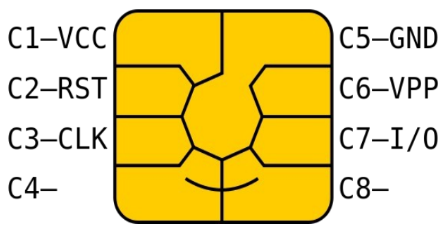|
|
||
|
BIP stands for Bearer Independent Protocol (BIP). It is an extension of the SIM Toolkit (STK) that allows a SIM card (or USIM) to establish a data connection using the available communication bearer (e.g., GSM, GPRS, UMTS, LTE, 5G). The term "Bearer Independent" in Bearer Independent Protocol (BIP) refers to the protocol's ability to operate over various types of communication bearers (e.g., GPRS, LTE, 5G) without being tied to a specific one. This flexibility allows a SIM card or other secure elements to establish and manage data channels across different network technologies. It enables the protocol to utilize whatever data connection is available, making it adaptable to various network conditions and technologies, which is especially useful for dynamic and heterogeneous mobile environments. Key Features of BIPThe Key Features of Bearer Independent Protocol (BIP) revolve around its ability to establish flexible communication channels between a SIM card and mobile networks. This flexibility allows the SIM card to independently manage connections over various bearers like GPRS, LTE, and 5G, making it adaptable to different network environments. BIP also supports secure data transfers, over-the-air updates, and remote management capabilities, ensuring efficient and secure communication. Its design empowers SIM-based applications to interact directly with networks, offering versatility for mobile devices and IoT deployments. Independent Bearer Management:As the name suggests, BIP allows the SIM card to use various bearers (network connections) independently. This means the SIM can initiate a data connection over GPRS, UMTS, LTE, or even Wi-Fi (if the device supports it). The SIM card can select the best available bearer and establish communication without relying solely on the device's OS or user interface. Use Cases:
How BIP WorksThe operation of Bearer Independent Protocol (BIP) involves the interaction between a SIM card and the mobile network through various bearers, such as GPRS, LTE, and 5G. It allows the SIM card to initiate and control data sessions, even managing secure communication channels independently of the mobile device's operating system. BIP employs a set of commands like opening and closing channels and sending or receiving data to enable this interaction. This capability ensures efficient, secure communication, making BIP suitable for both mobile and IoT applications. Establishing a Communication Channel:
Channel Types:
Security Considerations:
BIP Command Structure:BIP uses a set of STK commands for communication, such as:
The mobile device's baseband processor interprets these commands and facilitates the data exchange between the SIM card and the network. Communication between SIM and UE ModemThe communication between the SIM card and the modem within a User Equipment (UE) follows a structured protocol stack that integrates physical, data, and command layers. At the base, the ISO/IEC 7816 standard defines the physical interface, specifying the electrical connections and data transmission between the SIM and the modem. Building on this, BIP (Bearer Independent Protocol) allows the SIM card to initiate and manage data connections over cellular bearers. The exchange of commands and data between the SIM and modem uses APDUs (Application Protocol Data Units), which structure the messages for operations like authentication, data transfer, and bearer management. Together, these layers ensure secure and efficient communication between the SIM card and the mobile network through the UE modem. Physical Interface: ISO/IEC 7816 StandardThe SIM card and the mobile device communicate over a physical interface, usually following the ISO/IEC 7816 standard. This standard specifies the electrical characteristics, signal protocols, and data exchange formats. The physical connection is typically a set of contact points that connect the SIM card to the SIM card reader in the phone. These contacts include:
The SIM card is powered by the phone and can communicate with the baseband processor using these pins. Communication Protocol: BIP/APDU CommandsThe communication between the SIM card and the modem baseband processor relies on APDU (Application Protocol Data Units) commands, as outlined in the ISO 7816-4 standard. APDUs facilitate data exchange by defining a structured message format, consisting of Command APDUs (sent from the modem to the SIM for tasks like data access or authentication) and Response APDUs (sent back from the SIM, providing status or requested data). These interactions enable functions such as PIN verification, SMS management, and network-specific information retrieval, forming a core part of SIM-modem communication.
Data Transfer: Protocol Layer (Layer 2 - Layer 4):The data transfer between the SIM and the baseband processor involves several protocol layers:
Authentication and Key ExchangeOne of the key interactions is authentication between the SIM card and the network via the modem baseband. This involves:
Overview of Flow:
Refernces
|
||
